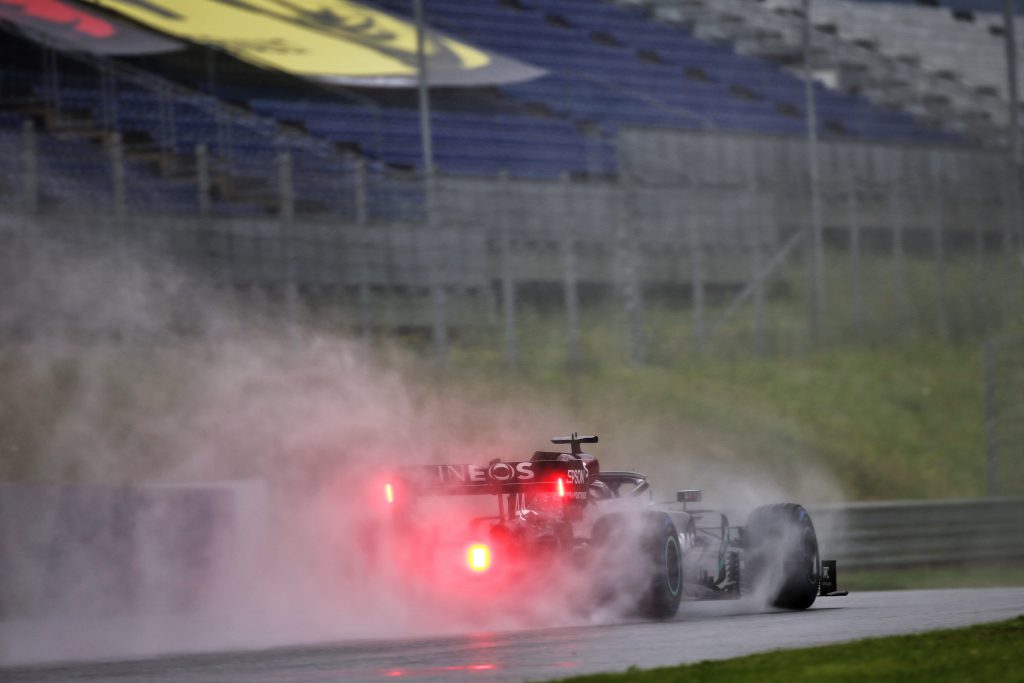Up Next

Formula 1’s thrilling Styrian Grand Prix qualifying session, Lewis Hamilton’s rival-blitzing pole lap and the heroics of drivers battling atrocious conditions will live long in the memory.
In a wet qualifying session there’s no doubting the skill of the drivers who come out on top. But even when such visual displays of brilliance occur, there are crucial tiny details that often go unseen.
It’s why Hamilton’s pole time was so lavishly praised, why Max Verstappen was still happy to be second on the grid, and why career-best third-place starter Carlos Sainz Jr says: “I did enjoy myself but I must say that it was quite stressful.
“It would be good for you guys to see what we are actually going through in a Formula 1 car towards the end of Q3.
“With the amount of standing water, aquaplaning, not seeing anything, just keeping your foot flat trusting the thing is gonna grip, and putting a lot together.”
There is an art of driving an F1 car on the edge in the wet and no doubt these three have mastered it, but a huge part of the challenge came between the laps in which they put it all on the line.
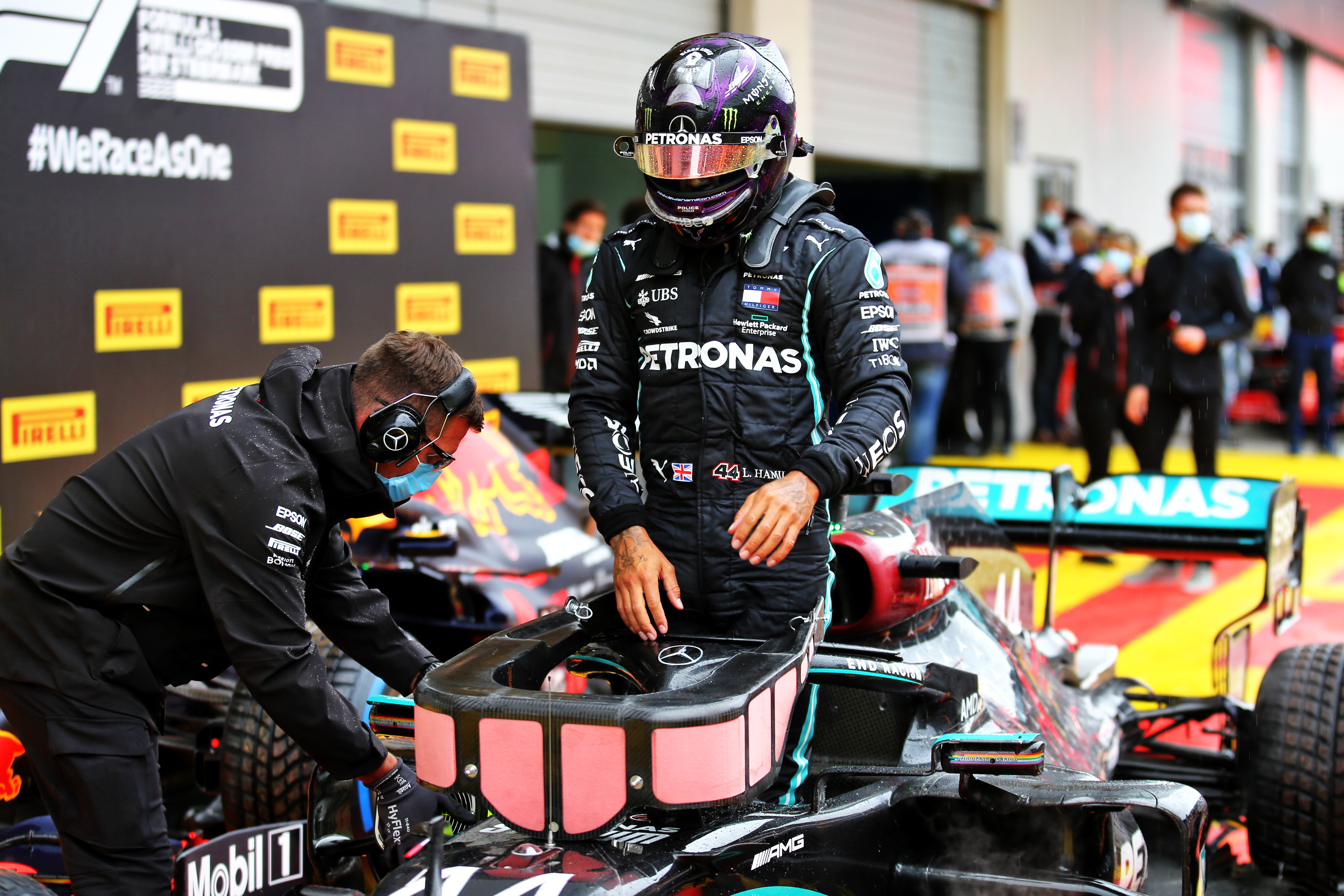
From the moment the light went green to signal the start of the final part of qualifying, to when the top three drivers finished their respective final laps, more than 100 messages were relayed between Hamilton, Verstappen and Sainz and their race engineers.
One week ago, in a conventional dry qualifying session, that number didn’t even reach 50.
“I think I was talking to Tom [Stallard], my engineer, before the session and I was letting him know that he was probably on for one of the most stressful qualifyings of the year,” says Sainz.
“He agreed that actually qualifying is the most difficult from a race engineer point of view.
“I think he did a tremendous job. We are all here probably because our race engineers have done a very good job also.”
Qualifying in the wet triggers a frenzy of information supply from engineer to driver, especially in conditions like yesterday when the best strategy is simply to stay on track and build tyre temperature.
Hamilton, for example, completed 34 laps in a one-hour wet qualifying session at the Red Bull Ring compared to just 21 in the dry, despite lapping around 15 seconds slower.
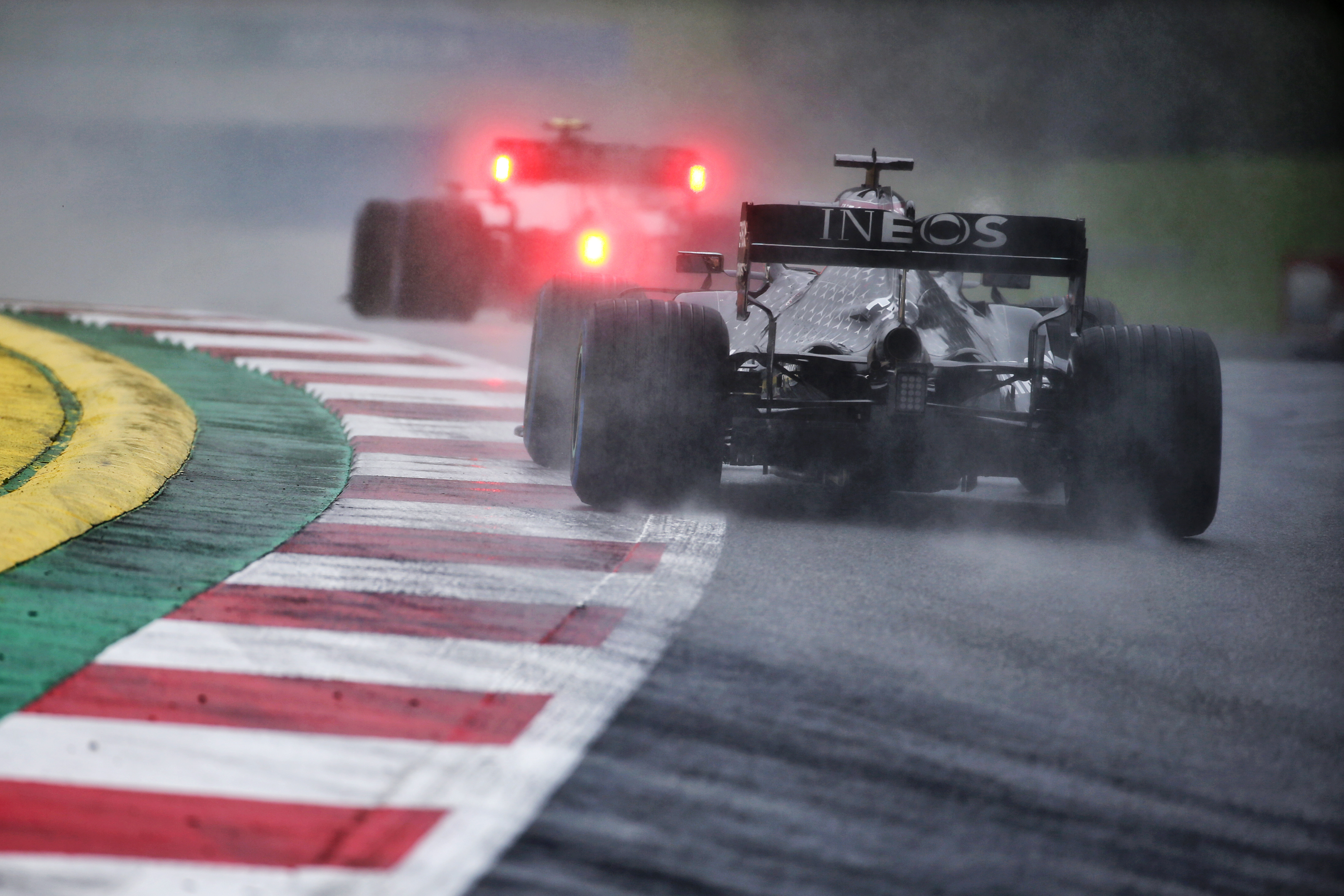
That immediately increases the amount of conversation time, but everything is heightened.
We can quantify ‘messages’ between driver and engineer in different ways but for the these purposes we’re defining a message as a specific piece of information – “copy” doesn’t count, but “five seconds to Sainz” and “BBAL 3, recharge off” spoken almost as one message counts as two.
And every type of conceivable message is being relayed during this 10-minute controlled (to a point) frenzy, from gaps to drivers behind to lap time information to engine mode reminders.
You might usually think of an F1/ballet comparison conjuring images of a car pirouetting off-track, probably in the wet too. But in these circumstances it’s something different.
“In these conditions where you really need to be sharp to advise the driver where the gaps are, how the weather develops, the driver feeding back of what he sees on the track, the intercom protocol needs to be very precise,” says Mercedes team boss Toto Wolff.
“Obviously it is helped if engineers and drivers have been working together for a long time and trust each other, because you are able to be very direct with your messaging, because the relationship is solid.
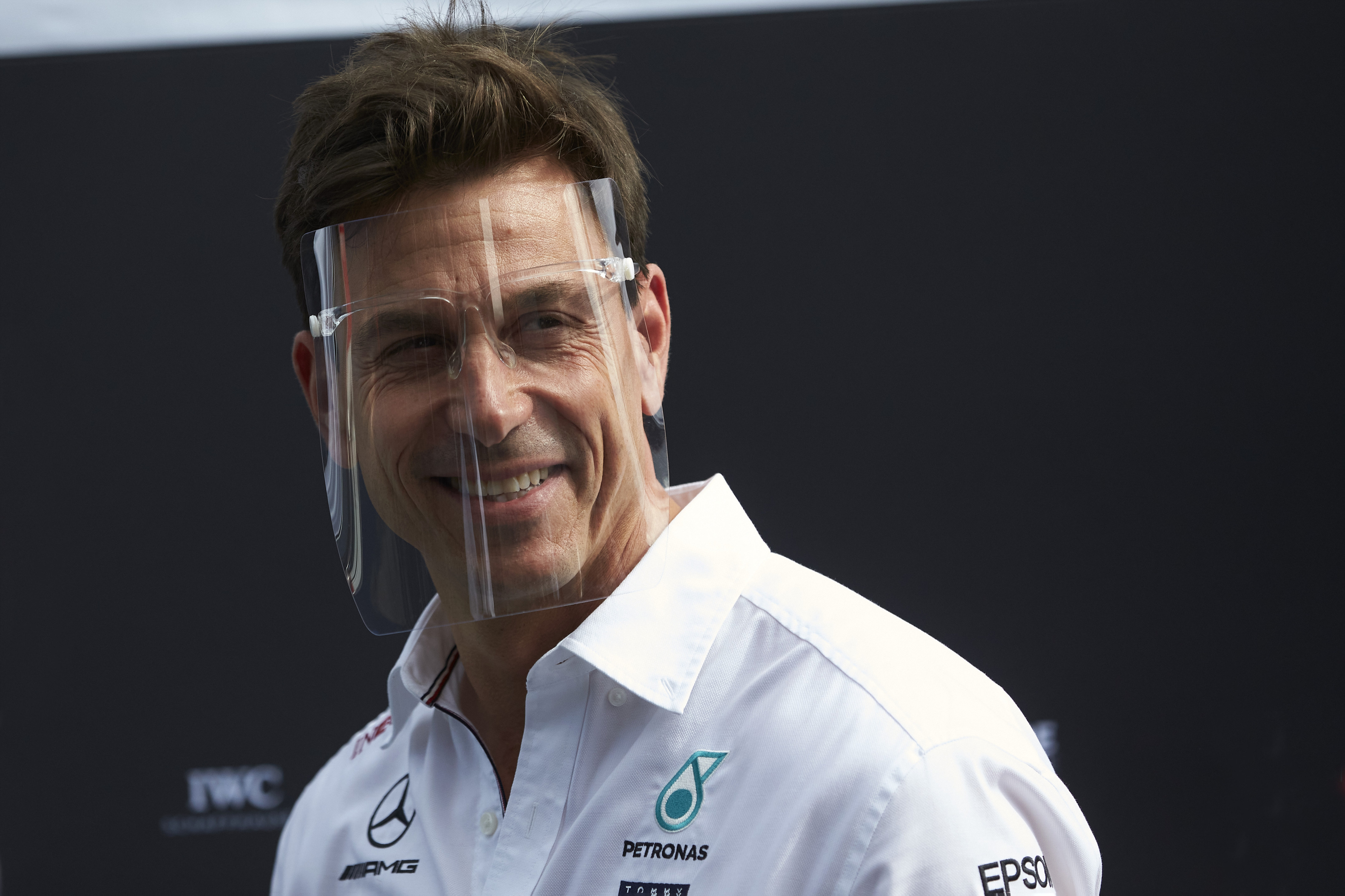
“If you would hear the ballet that is going on on the intercom between everybody on the pitwall and in the garage, I must say I’m really proud of how it happened today.
“Because it is about finding the right spot on the track, analysing the weather, deciding where to put the engine into recharging mode, or when to deploy the party mode, which doesn’t allow for long.
“And that was perfectly synchronised today.”
The need to crack on with back-to-back laps at times means managing the battery is key, as there isn’t the luxury of the normal cool-down lap to recharge.
And there’s such a delicate balance to strike in timing on-track position with tyre temperatures, visibility and engine performance.
As if monitoring that information is not enough, with mirrors that Verstappen says “in the wet you can take them off, it doesn’t really make a difference”, the engineers also become the driver’s spotter at critical moments.
“You really feel very lonely out there because there’s a cloud of rain ahead of you, the spray, and then the same behind,” says Hamilton.
“And so, you don’t know where anyone is, you don’t know what time it is, all you know is that you’re going super fast.”
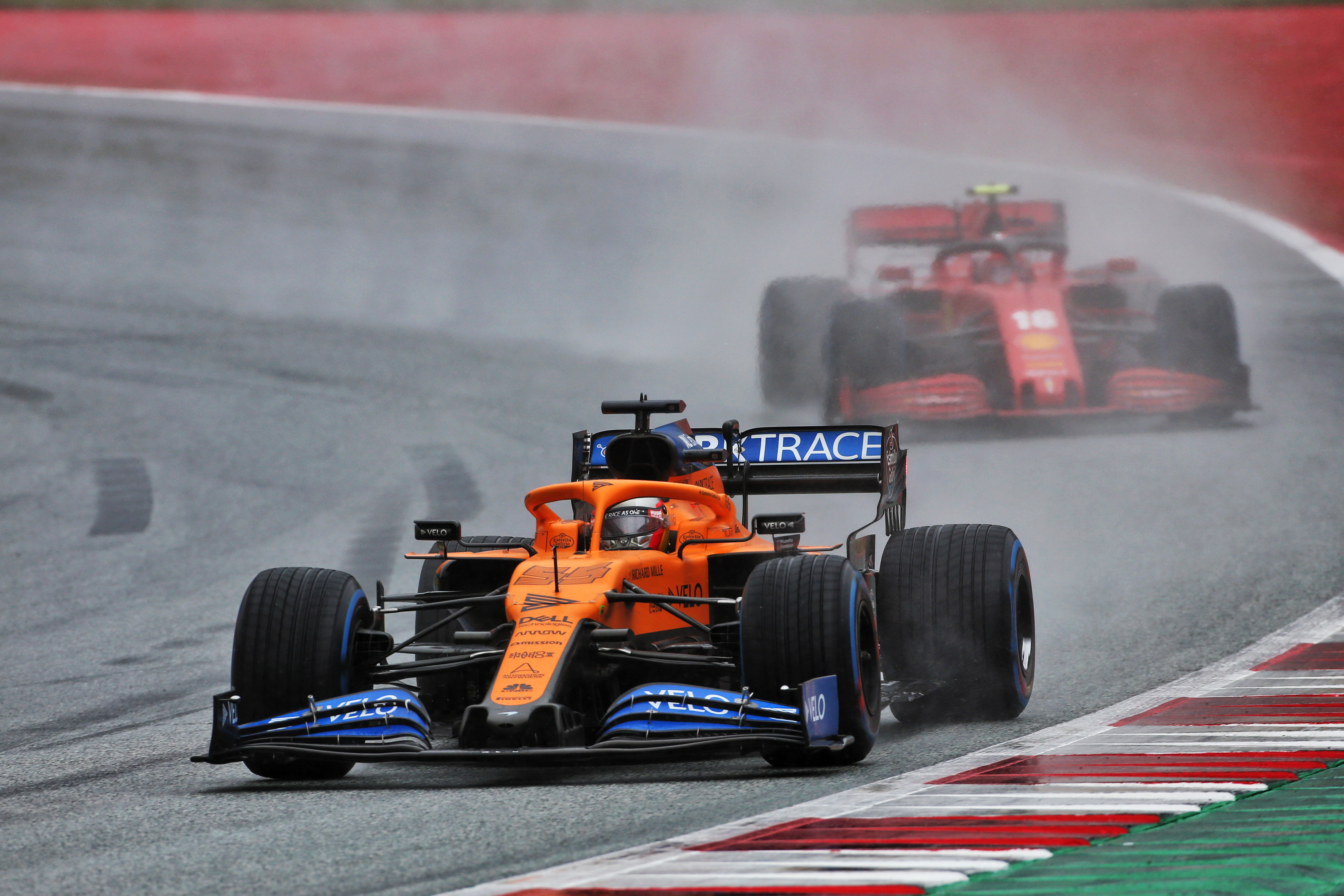
Sainz adds: “As Lewis said, we are completely blind in the car, we see nothing in front, we see nothing at the back.
“We don’t even know who is pushing, who is not.
“Sometimes you don’t want to disturb someone but you need to keep track position so there are basically our eyes more than ever in these conditions.”
Maintaining track position is always important in qualifying but in the wet it would be a killer to be overtaken late in the lap and suddenly have visibility compromised for the push lap, or have to back right off to create a space and lose tyre temperate.
Hamilton, Verstappen and Sainz all had different degrees of communication at different moments but Verstappen and Gianpiero Lambiase were talking most – often naturally, but sometimes with Verstappen eagerly pushing for updates on space around him as he prepared for a lap.
“It’s more in the lap before you want to do your best lap,” Verstappen says. “Towards the end of the session, you keep communicating a lot.
“But the engineer sometimes stays quiet in the middle of the lap, for example, but it can happen that people are backing you up towards the end of the lap and they tell you.
“I don’t mind when they’re talking to me. I know it’s tricky conditions but it’s also good to know what’s happening in terms of lap time, gaps in front, gaps behind, because you can’t see anything.”
Hamilton and Peter ‘Bono’ Bonnington – the most recognisable engineering voice in F1 – have a similarly dynamic communication pattern over the radio but the organised chaos of a wet qualifying tests even the best relationships.
That’s why a tiny mix-up of sorts led to Hamilton issuing a “leave me to it, Bono” message that amused plenty of internet onlookers, probably reminded of Kimi Raikkonen’s infamously dismissive 2012 remark in Abu Dhabi. You know the one.
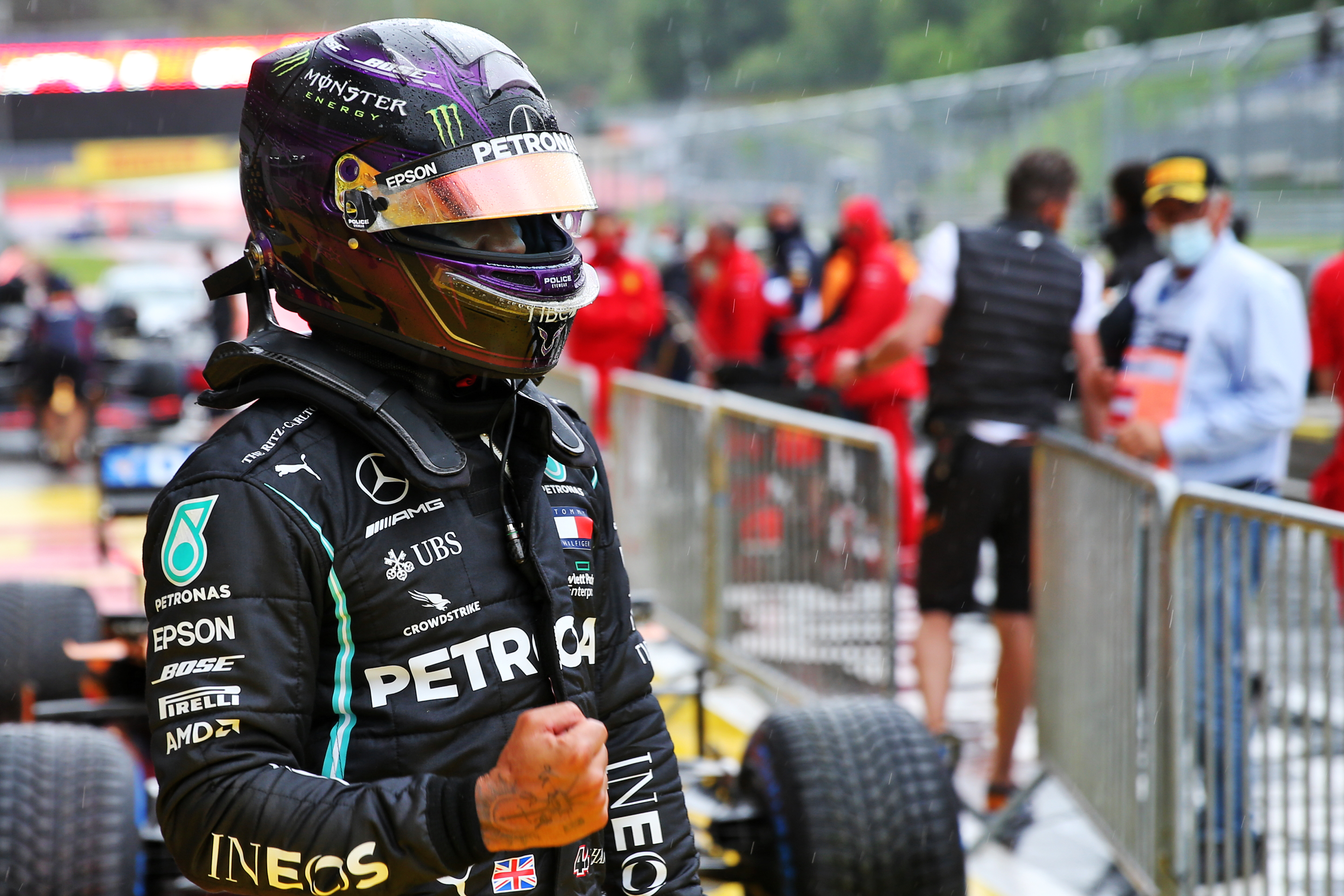
But as Hamilton says this was just a consequence of everything the drivers and engineers are trying to manage: ”I think there was one lap that he was quite relaxed, said take this lap to calm down, and I was starting another lap.
“So I was on the lap and he was trying to talk to me about about the next lap and I was like Bono just give me a second.
“It’s not easy definitely to hear from someone when you’re pushing or cornering because you’re so focused on one thing and it can be distracting. But that wasn’t an issue.”
Hamilton says driving in the wet is a unique experience because the risk is “magnified by 1000”, and there’s no denying that rainmasters are a special breed.
The “very little forgiveness” a driver gets in the wet, says Hamilton, is when you have the “ultimate respect for other drivers, who are in the same boat who are facing the same issues that you’re facing and get the job done”.
“That’s impressive to see,” says Hamilton, and he’s right of course. But behind every great driver is usually a great engineer.
“Communication really is vital and I think the rapport you have with your engineer, you have that good relationship and good understanding of each other,” says Hamilton.
“And it’s something I discussed and Bono and I have learned over time, how to lean on each other and when not to.
“I think the communication was really perfect, I couldn’t have done it without him.”
Like with the drivers, days like Styrian GP qualifying are when they are tested to the extreme with a premium on intense concentration, focus and execution.
The ballet analogy falls short in the end. Yes, F1 qualifying is a structured and highly technical operation, and the back-and-forth between driver and engineer has been well-rehearsed over time to the point of seeming perfectly choreographed.
But in the wet, improvisation is key.
That manifests itself in something spectacular on-track, but there’s a beauty in the verbal dance it creates as well.

